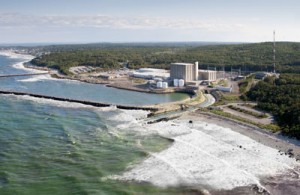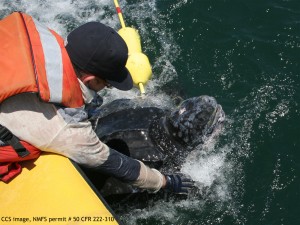
COURTESY PILGRIM NUCLEAR POWER STATION
UPDATE: An official with the U.S. Nuclear Regulatory Commission (NRC) provided additional information on their recently-issued inspection report of the Pilgrim Nuclear Power Station. The statement from NRC Public Affairs Officer for Region 1 Neil Sheehan is as follows:
The contractors were exposed to contamination involving a mixture of several radionuclides commonly seen in power reactors.
The predominant radionuclide was cobalt-60. All doses were less than 10 millirems committed effective dose equivalent, which is the dose a worker would receive from the internal contamination over a 50-year period.
The internal exposures were from intakes of radioactive contamination. It was assumed that the intakes became uptakes for the purposes of the internal dose estimates.
Sheehan adds that the annual occupational dose limit for nuclear power plant workers is 5 rems, or 5,000 millirems.
The original story can be found below:
PLYMOUTH – Federal authorities said the company charged with decommissioning the Pilgrim Nuclear Power Station violated a regulation when it failed to use a safety measure that could have prevented workers from being exposed to low doses of radioactive materials.
A recently-released inspection report from the Nuclear Regulatory Commission said Holtec International should have used air sampling to make sure workers didn’t come in contact with airborne radiation during a phase of the decommissioning in August of 2020.
The report said six contractors experienced “unplanned intakes of radioactive material” during the removal of control rod drives from the plant’s reactor that summer.
NRC inspectors said that process “posed a significant potential to spread high levels of loose surface contamination.”
During the work, two contractors were found to have low levels of radioactive contamination on them after removing their protective suits.
After that, workers were told to face the opposite direction when taking their gear off so they would be away from the air flow of the work area.
Inspectors said that measure proved to be inadequate since four more workers also had low levels of contamination on their person the next week.
Holtec was in violation of an NRC code because it didn’t implement air sampling in an area where workers were using respiratory protection and being decontaminated.
The NRC determined the incidents were of a low safety significance since the workers experienced very low exposures. Holtec took the findings into account for a corrective action program.
The NRC report was made public on February 8. Their inspection was completed this past September and it included an on-site review in Plymouth.
The extensive report also discovered Holtec’s whole-body counter at the decommissioning site was not operating at full capacity. The devices are used to measure and detect radioactive material in people.
Inspectors said a vendor set up the whole-body counter so it would work without the instrument’s “gut detector” – one of two detectors in the unit.
The inspectors said the device was adequate for identifying radioactive intakes, but operating without the gut detector reduced its ability to “assess internal exposures via the ingestion pathway.”
Additionally, the NRC team discovered there was a lack of qualified workers who knew how to operate the machine at the site and there was no backup plan for whole-body counting if the unit broke.
The report also brought up concerns about “inappropriate” plans to use routine drug screening equipment for detecting internal radioactive doses in staff urine samples. Inspectors noted this would needlessly limit timely detections. They also said there were no on-site materials to collect fecal samples.
The inspectors reviewed Holtec’s trash compactor facility and found it was suitable except for the detection of Cesium-137 (a radioactive isotope) in four samples of sediment on the building’s roof.
Holtec said that the radioactive material “was present as a result of the global fall-out of Cs-147 from historical atmospheric nuclear weapons testing and the Chernobyl nuclear accident.”
The NRC team challenged the company’s thinking on the matter. Holtec officials said they would properly remove the material on the roof and re-examine the area.
The findings come as Holtec also recently announced plans to dump radioactive water from another decommissioned nuclear plant near Peekskill, New York.
The Highlands Current reported that Holtec is seeking to discharge water from the Indian Point nuclear plant this summer.
A Holtec spokesperson said they aren’t planning to wait for an endorsement from New York environmental authorities for release. The NRC and EPA oversee discharges of radioactive materials.
Holtec is still pursuing an updated permit from the EPA in hopes of moving forward with discharging radioactive water from the Pilgrim plant into Cape Cod Bay.
In a recent Sunday Journal interview, Association to Preserve Cape Cod Executive Director Andrew Gottlieb said Massachusetts identified a lab to perform confirmation sampling of the water from the Pilgrim plant.
“The fact that the state has the ability to have an independent sample is an important one. It gives us some assurance that we don’t have to rely on the word of the project proponent, Holtec, and that the public can have confidence that we will ultimately know what’s in the water before it gets discharged,” Gottlieb said.
Plymouth lawmakers recently proposed legislation to eliminate citizen members from the Nuclear Decommissioning Citizens Advisory Panel and restructure the group.
By Brian Engles, CapeCod.com NewsCenter
























